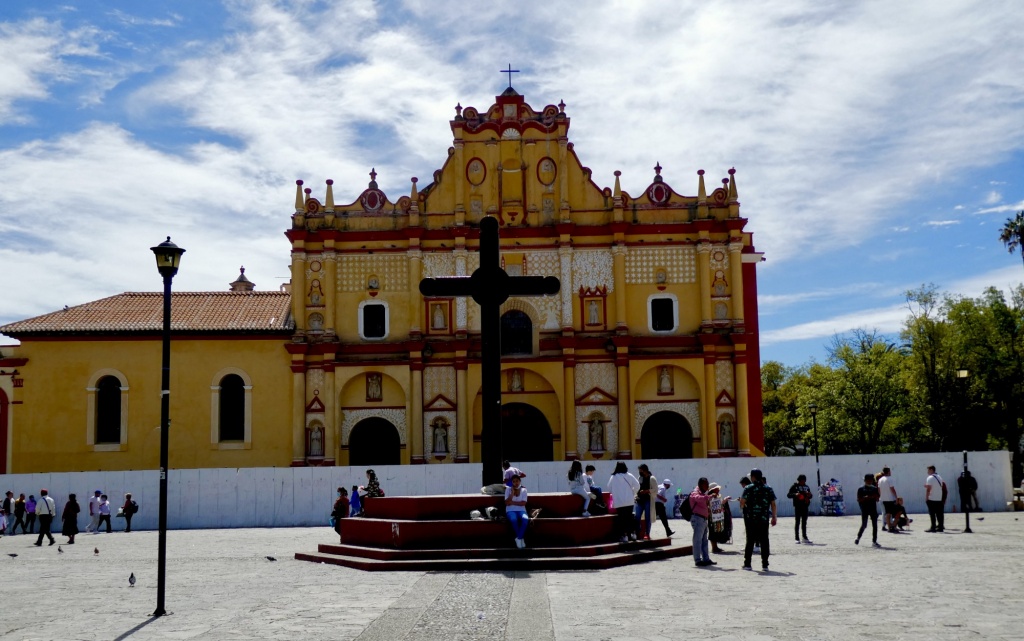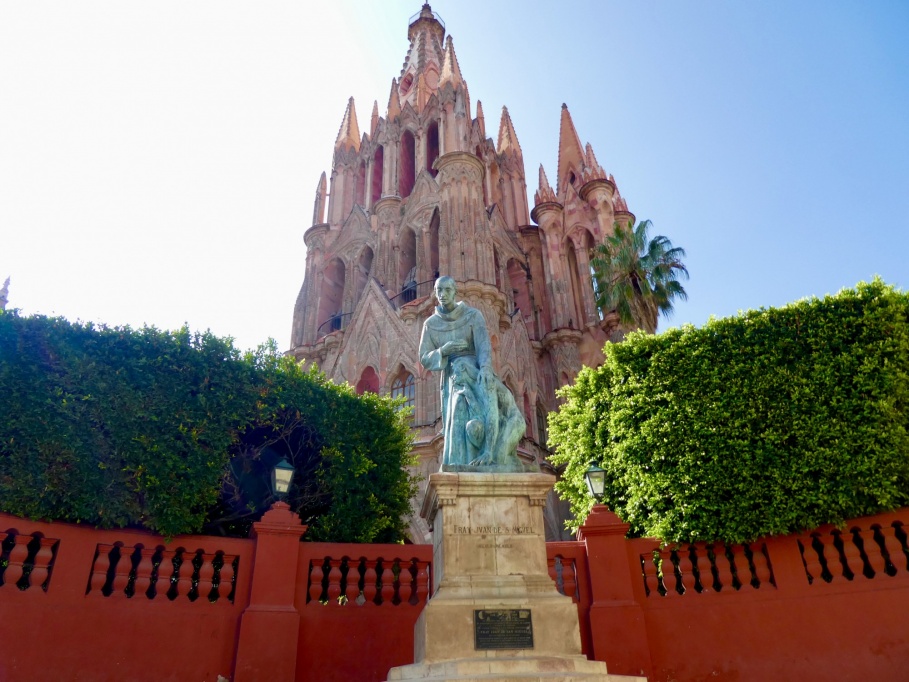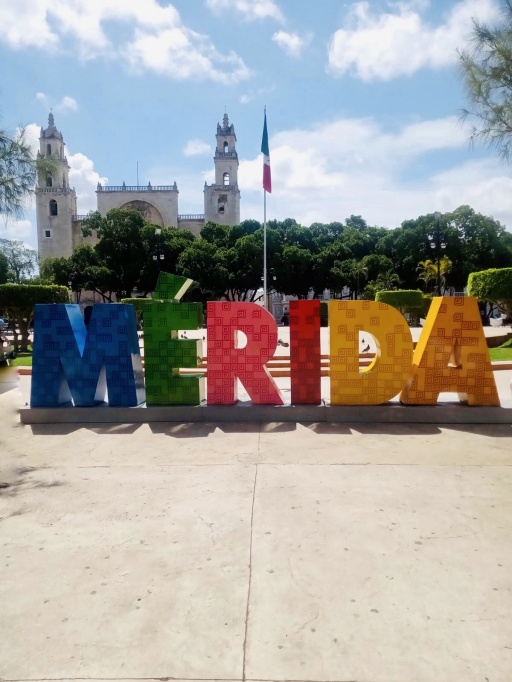MEXICO
TRAVEL GUIDE
Embark on an unforgettable journey through Mexico, a land of vibrant culture, ancient history, and breathtaking landscapes. From the bustling streets of Mérida to the serene beaches of the Yucatán, Mexico offers endless adventures for every traveler. Explore iconic ruins, indulge in world-famous cuisine, and immerse yourself in the colorful traditions that make this country unique. Whether you’re seeking adventure, relaxation, or a cultural deep dive, Mexico promises an experience filled with wonder and discovery at every turn.
Need To Know: How To Travel To Mexico
Travel to Mexico to experience its rich history, diverse culture, and stunning landscapes. From ancient Maya ruins and colorful colonial cities to beautiful beaches and vibrant festivals, Mexico offers endless opportunities for exploration, relaxation, and adventure.
For most travelers, a visa is not required for a short visit to Mexico if staying for tourism purposes. You can enter with a valid passport and may be granted a tourist visa upon arrival for up to 180 days. Always check the latest entry requirements before traveling.
The currency of Mexico is the Mexican Peso, abbreviated as MXN. It is symbolized by “$” and comes in both coins and banknotes. The peso is widely used throughout Mexico for all types of transactions, from small purchases to larger investments.
Mexico offers great value for travelers, with affordable accommodations, delicious street food, and a range of budget-friendly activities. From exploring ancient ruins to relaxing on beautiful beaches, it’s possible to experience Mexico on a reasonable budget, making it an excellent destination for cost-conscious travelers.
Not all areas in Mexico are safe, so it’s important to exercise caution, especially in less touristy or high-risk regions. Stick to well-known destinations like Mérida, Cancun, and Mexico City, where safety measures are more widely observed.
In most parts of Mexico, the tap water is not safe to drink, brush your teeth, or wash vegetables. It’s recommended to stick to bottled or filtered water and avoid ice made from tap water to prevent stomach issues. Always choose bottled water when dining out. Add a few drops of Iodine to water when washing vegetables (available at supermarkets)
The food of Mexico is diverse and flavorful, featuring dishes like tacos, tamales, mole, and ceviche. It combines indigenous ingredients like corn, beans, and chilies with Spanish and other cultural influences, resulting in a rich culinary tradition known for its bold flavors and vibrant colors.
Mexico Snapshot: How To Travel To Mexico
Traveling to Mexico: A Comprehensive Guide
Mexico, a country rich in history, culture, and natural beauty, offers travelers a diverse range of experiences. From its bustling cities to tranquil beaches, ancient ruins, and vibrant traditions, Mexico is a destination that captivates all who visit. Here’s a guide to help you plan your trip, get there, get around, and understand the country’s history, food, culture, and safety.
How to Plan a Trip to Mexico
Planning a trip to Mexico involves several key steps to ensure a smooth and enjoyable journey. Start by deciding which regions you want to visit—whether it’s the bustling capital, Mexico City, the beach resorts of the Yucatán Peninsula, or the colonial cities of central Mexico.
Travel Documents: Ensure your passport is valid for at least six months beyond your planned departure date. Depending on your nationality, you may need a visa to enter Mexico. Check the visa requirements well in advance.
Vaccinations and Health: Check with your healthcare provider for any recommended vaccinations or health precautions. It’s also advisable to have travel insurance that covers medical emergencies.
Budget and Accommodation: Determine your budget and book accommodations in advance, especially during peak tourist seasons. Mexico offers a wide range of lodging options, from luxury resorts to budget-friendly hostels.
Getting to Mexico
Mexico is well-connected to the world, with several international airports serving major cities and tourist destinations.
By Air: The most common way to enter Mexico is by flying into one of its major international airports. Mexico City International Airport (MEX), Cancún International Airport (CUN), and Los Cabos International Airport (SJD) are among the busiest and most accessible.
By Land: If you’re traveling from the United States, you can enter Mexico by crossing one of the numerous border checkpoints. Popular crossings include those in Tijuana, Nogales, and Ciudad Juárez. Ensure you have the necessary documentation and be prepared for border inspections.
By Sea: Cruise ships frequently dock at Mexican ports, particularly in the Yucatán Peninsula and Baja California. This option provides a leisurely way to visit multiple coastal destinations.
Getting Around Mexico
Once in Mexico, there are various transportation options to explore the country:
Domestic Flights: For long distances, consider taking domestic flights. Airlines like Aeroméxico, Volaris, and Interjet offer extensive routes within Mexico.
Buses: Mexico’s bus network is extensive and efficient. First-class buses (camiones) offer comfortable seating, air conditioning, and onboard entertainment. Companies like ADO, ETN, and Primera Plus provide reliable services.
Car Rental: Renting a car is an option for those wanting the freedom to explore at their own pace. Be aware of driving conditions and local traffic laws.
Public Transportation: In cities, public transportation options include buses, metro systems (in Mexico City and Monterrey), and taxis. Ride-sharing services like Uber are also available in major urban areas.
Mexico’s History
Mexico’s history is a rich tapestry of indigenous civilizations, Spanish colonization, and modern independence.
Pre-Columbian Era: Mexico was home to advanced civilizations such as the Aztecs, Mayans, and Olmecs. These cultures left behind impressive archaeological sites like Teotihuacan, Chichen Itza, and Palenque.
Colonial Period: In 1521, Spanish conquistadors led by Hernán Cortés conquered the Aztec Empire. The colonial period saw the fusion of indigenous and Spanish cultures, evident in architecture, cuisine, and traditions.
Independence and Modern Era: Mexico gained independence from Spain in 1821. The 20th century was marked by the Mexican Revolution (1910-1920), leading to significant social and political reforms. Today, Mexico is a thriving democracy with a rich cultural heritage.
Mexican Food
Mexican cuisine is celebrated worldwide for its bold flavors and diverse ingredients. Here are some must-try dishes:
Tacos: Soft corn tortillas filled with various meats, vegetables, and sauces. Try different regional variations like tacos al pastor, tacos de carnitas, and tacos de barbacoa.
Mole: A rich, complex sauce made from chilies, chocolate, nuts, and spices. Mole poblano is a famous version often served over chicken.
Tamales: Corn dough stuffed with meats, cheese, or chilies, wrapped in corn husks, and steamed. They are a traditional Mexican comfort food.
Ceviche: Fresh seafood marinated in lime juice with onions, tomatoes, and cilantro. It’s a refreshing dish, especially popular in coastal regions.
Chiles en Nogada: Poblano chilies stuffed with picadillo (a mixture of meat, fruits, and spices), topped with walnut sauce and pomegranate seeds. This dish is typically served during the Mexican Independence Day celebrations.
Mexican Culture and Religion
Mexico’s culture is a vibrant blend of indigenous traditions, Spanish influences, and modern elements.
Festivals and Celebrations: Mexico is known for its colorful festivals, such as Dia de los Muertos (Day of the Dead), Cinco de Mayo, and the Guelaguetza festival. These events are marked by music, dance, and elaborate costumes.
Art and Music: Mexican art is renowned for its folk art, murals, and contemporary pieces. Famous artists include Frida Kahlo and Diego Rivera. Traditional music genres include mariachi, ranchera, and norteño.
Religion: Mexico is predominantly Catholic, a legacy of Spanish colonization. Religious traditions and ceremonies play a significant role in Mexican culture, with many festivals having religious origins.
Safety and Dangers in Mexico
While Mexico is a popular tourist destination, it’s important to be aware of safety considerations:
Travel Advisories: Check travel advisories from your government and stay informed about the safety situation in different regions. Some areas may have higher crime rates or political instability.
Health Precautions: Drink bottled or purified water to avoid waterborne illnesses. Be cautious with street food and ensure it’s prepared in hygienic conditions.
Personal Safety: Exercise common travel precautions such as avoiding isolated areas at night, not displaying valuables, and being cautious with strangers. In cities, use reputable transportation options like registered taxis or ride-sharing services.
Conclusion
Mexico is a destination that offers something for every traveler, from its rich historical sites and vibrant culture to its delicious cuisine and stunning landscapes. By planning your trip carefully, understanding how to get there and get around, and staying informed about safety, you can ensure a memorable and enjoyable visit to this fascinating country.



